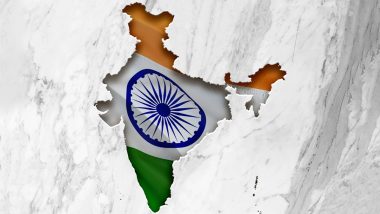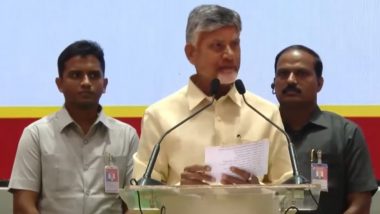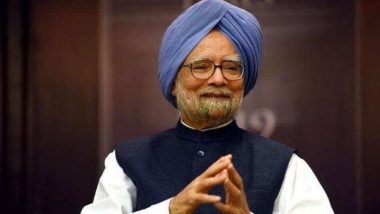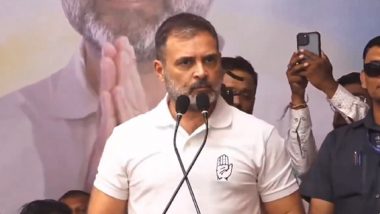The Indian independence movement, marked by years of struggle and determination, culminated in establishing the sovereign nation of India on August 15, 1947. This historic event marked the end of 200 years of British colonial rule and the beginning of a new era for India. However, the process of integrating various princely states into the newly independent India was a complex and multifaceted challenge. With India preparing to celebrate its 76 years of Independence on August 15, 2023, let's look at the notable instances of state annexations that India witnessed at the beginning of its post-independence era.
India currently has 28 states and 8 union territories. But when India got independence, not all princely states were ready to join the Union of India. Here's how princely states like Hyderabad, Jammu and Kashmir, and Goa got integrated into independent India. Independence Day 2023: Know Flag Code of India and How to Hoist and Dispose of Tiranga With Full Respect As Per Government Guidelines.
From Nizam's Rule to Indian Union: The Annexation of Hyderabad
Hyderabad, located in south-central India, had a rich history as the capital of the princely state of Hyderabad, ruled by the Nizams. The Nizams were one of India's wealthiest and most powerful rulers, maintaining a degree of autonomy under the suzerainty of the British Crown. As India gained independence in 1947, the question of Hyderabad's status arose. The Nizam, Mir Osman Ali Khan, initially sought to maintain Hyderabad's independence or possibly join Pakistan due to its Muslim-majority population.
Tensions escalated as negotiations between Hyderabad and India faltered. The Nizam's refusal to accede to India's request for integration led to a crisis. On September 13, 1948, "Operation Polo" was launched by the Indian Army, aimed at compelling the Nizam to accede to India. The Indian military swiftly defeated Nizam's forces, and within a matter of four days, the city of Hyderabad was brought under Indian control. On September 17, 1948, the Nizam signed the Instrument of Accession, formally integrating Hyderabad into the Indian Union. Independence Day 2023 Special: From APJ Abdul Kalam to TN Seshan and Kalpana Chawla, 10 Indians Who Achieved Exceptional Success and Made India Proud Post Independence.
The Nizam's rule came to an end, and Hyderabad became a part of India as a new state, Andhra Pradesh, which was subsequently formed by the merger of the Telugu-speaking areas of the former Hyderabad state and the Madras Presidency. The integration of Hyderabad marked a significant milestone in India's efforts to consolidate its territories after independence. In 2014, the state of Andhra Pradesh was bifurcated, and a new state, Telangana, was carved out with Hyderabad as its capital.
Sikkim's Annexation: From Monarchy to Democracy within India
Sikkim, located in the eastern Himalayas, came under the suzerainty of the British Empire in the 19th century after the Anglo-Sikkimese War of 1861. The Chogyal (monarch) remained the ruler of Sikkim, but British influence increased. In 1947, when India gained independence, Sikkim was recognised as an independent kingdom under the protection of India. It maintained a distinct identity with its own monarchy and government.
In the 1970s, internal strife and political turmoil arose in Sikkim. Protests and demands for democratic reforms led to a growing movement against the monarchy. In 1973, the Prime Minister of Sikkim appealed to India for assistance in maintaining law and order. Amidst these developments, India and Sikkim's leadership agreed to hold a referendum to determine the monarchy's future. The referendum took place in 1975, with most of Sikkim's population voting to abolish the monarchy and integrate with India.
Following the referendum, on May 16, 1975, Sikkim officially became the 22nd state of the Indian Union. The monarchy was abolished, and Sikkim's political and administrative structures were integrated into the Indian system. Independence Day 2023 Office Bay Decoration Ideas: From Tricolour Ribbon Walls to Tiranga Rangoli Design, 5 Ways You Can Win the Best Office Decorations Award.
'Operation Vijay': The Move that Annexed Goa to India
In 1510, the Portuguese explorer Alfonso de Albuquerque captured Goa from the Sultan of Bijapur, establishing Portuguese colonial rule. As India gained independence from British rule in 1947, Goa remained under Portuguese control. The Indian government sought the return of Goa to Indian sovereignty, viewing it as an integral part of the Indian subcontinent. Tensions between India and Portugal escalated, and in December 1961, the Indian government launched "Operation Vijay" to liberate Goa, Daman, and Diu from Portuguese rule.
The military intervention aimed to secure Indian control over these territories. The operation involved both land and naval forces, leading to swift action and the surrender of Portuguese forces. On December 19, 1961, Goa was officially annexed by India. After annexation, Goa, Daman, and Diu were initially administered as a union territory. In 1987, Goa was granted statehood, becoming the 25th state of the Indian Union. This transformation marked its integration into the Indian political system as a full-fledged state, with representation in the Indian Parliament.
Annexation of Travancore: The Maharaja's Decision to Join the Indian Union
Travancore, located in the southern part of India, was a princely state ruled by Maharaja Chithira Thirunal Balarama Varma, who initially considered maintaining independence. In 1949, the newly formed Government of India Act of 1935 (Application to States) Order was extended to Travancore, effectively integrating the state's administration into the framework of the Indian government. Various factors, including the popular demand for democracy and the growing influence of political parties within Travancore, drove this move.
As a result of negotiations and discussions between the Maharaja, his government, and representatives of the Indian government, it was decided that Travancore would accede to the newly independent Indian Union. On August 12, 1947, Travancore officially acceded to India. On July 1, 1949, the unified state of Travancore-Cochin was formed, which subsequently became part of the Indian Union as a new state. On November 1, 1956, Travancore-Cochin was further merged with the Malabar district of the Madras state to form the new state of Kerala.
Bhopal's Smooth Annexation into Independent India
Bhopal was a princely state located in central India, ruled by the Nawabs of Bhopal. As India gained independence, Bhopal's Nawab, Hamidullah Khan, considered maintaining independence for the state. However, the desire for integration with India was growing among the population. In the face of mounting internal pressure, the Nawab acceded to India in 1947.
Bhopal initially retained its autonomy as a separate princely state within the Indian Union. However, tensions escalated due to disagreements over administrative matters, leading to a constitutional crisis. In 1949, the Indian government intervened, dismissing the Nawab's government and placing the state under direct rule. On June 1, 1949, Bhopal was officially merged into India, becoming part of the newly formed state of Madhya Pradesh in 1956.
Tensions and Transformations: Jammu and Kashmir’s Annexation Into Independent India
Jammu and Kashmir, located in the northernmost region of India, was ruled by the Dogra dynasty under Maharaja Hari Singh. The state had a Muslim-majority population but was ruled by a Hindu Maharaja. As India gained independence in 1947, the princely states were given the choice to join either India or Pakistan or remain independent. In the case of Jammu and Kashmir, the decision was particularly crucial due to its geographical significance and the diverse religious makeup of its population.
In October 1947, tribal militias, believed to be supported by Pakistan, invaded Jammu and Kashmir, leading to a crisis. Maharaja Hari Singh sought assistance from India, agreeing to accede to India in return for military aid. On October 27, 1947, the Maharaja signed the Instrument of Accession, formalising the state's accession to India. The Indian government sent troops to defend the territory, and a conflict known as the Indo-Pakistani War of 1947–1948 or the First Kashmir War erupted. The United Nations intervened, leading to a ceasefire and establishing the Line of Control (LoC), dividing the region between India and Pakistan.
A part of Jammu and Kashmir, known as Azad Jammu and Kashmir, remains under Pakistani administration. The accession of Jammu and Kashmir led to the establishment of its special status within India. Article 370 of the Indian Constitution granted the state considerable autonomy in legislative matters, except in areas like foreign affairs, defence, and communications. Over the years, tensions simmered in the region due to various factors, including political, social, and religious differences.
In 2019, the Indian government took a significant step by revoking the special status of Jammu and Kashmir through a presidential order and bifurcating the state into two union territories: Jammu & Kashmir and Ladakh. The move led to mixed reactions nationally and internationally and heightened tensions between India and Pakistan. The region has since experienced changes in governance, security, and political dynamics. Efforts have been made to restore normalcy, encourage development, and integrate the region more closely with the rest of India.
(The above story first appeared on LatestLY on Aug 15, 2023 06:26 AM IST. For more news and updates on politics, world, sports, entertainment and lifestyle, log on to our website latestly.com).













 Quickly
Quickly





















